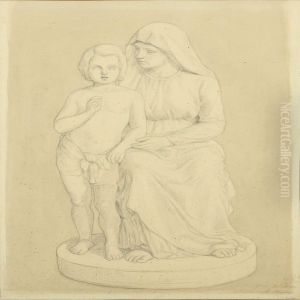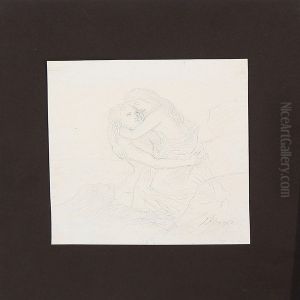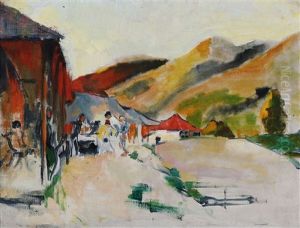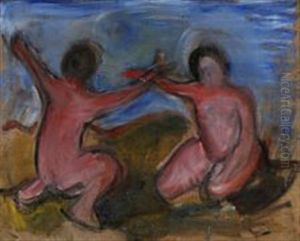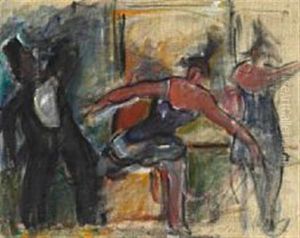Jens Adolf Jerichau Paintings
Jens Adolf Jerichau was a Danish sculptor born on April 6, 1816, in Assens, Denmark. He was part of the Danish Golden Age, a period of exceptional creative production in Denmark in the early to mid-19th century. Jerichau's artistic talents emerged early, and he began his formal education at the Royal Danish Academy of Fine Arts in Copenhagen, where he studied from 1832 to 1838.
Jerichau was influenced by both classical and contemporary trends in European sculpture. After completing his studies, he traveled extensively through Europe. He visited Rome, which was a central hub for artists at the time, and where he was deeply inspired by the classical sculptures and the works of his contemporaries. In 1841, he married the painter Elisabeth Jerichau-Baumann, who was also a notable artist of the period. Their partnership was a mutual source of artistic influence and support.
Throughout his career, Jens Adolf Jerichau produced a wide range of works, including statues, busts, and reliefs. His style is characterized by a combination of neoclassical ideals and a more naturalistic approach that began to emerge in the mid-19th century. One of his most famous works is 'The Panther Hunter' (1846), which exhibits a dynamic composition and an expressive quality that was innovative for its time.
Jerichau's contributions to Danish art were significant, and he enjoyed considerable success during his lifetime. He was appointed professor at the Royal Danish Academy of Fine Arts in 1849 and later became its director, a position he held until his death. In his roles at the Academy, he had a lasting influence on the next generation of Danish sculptors.
Jens Adolf Jerichau passed away on July 25, 1883, in Copenhagen. His legacy is preserved in the many works he left behind, as well as in the artistic principles he imparted to his students. Today, his sculptures are held in various museums and collections in Denmark and beyond, attesting to his enduring impact on the world of art.


